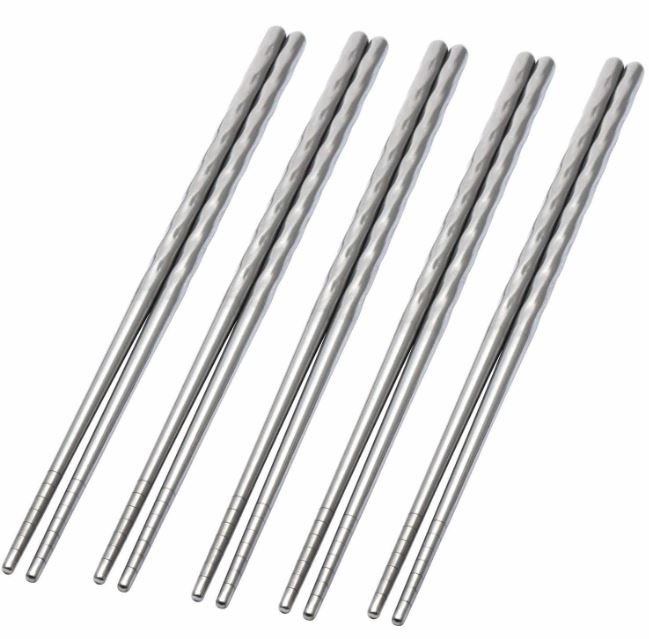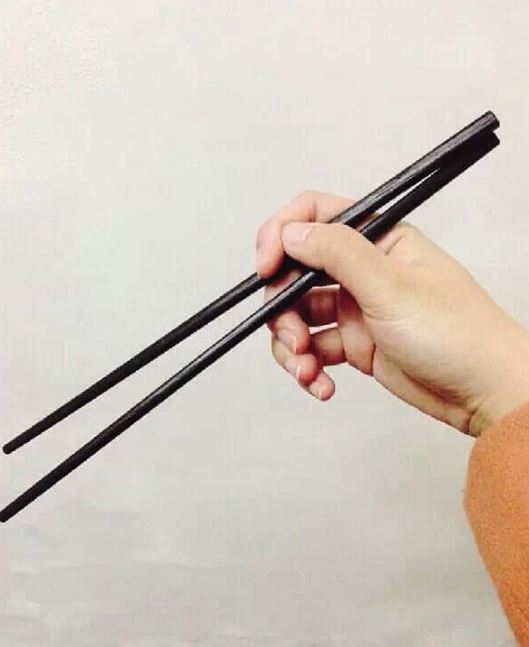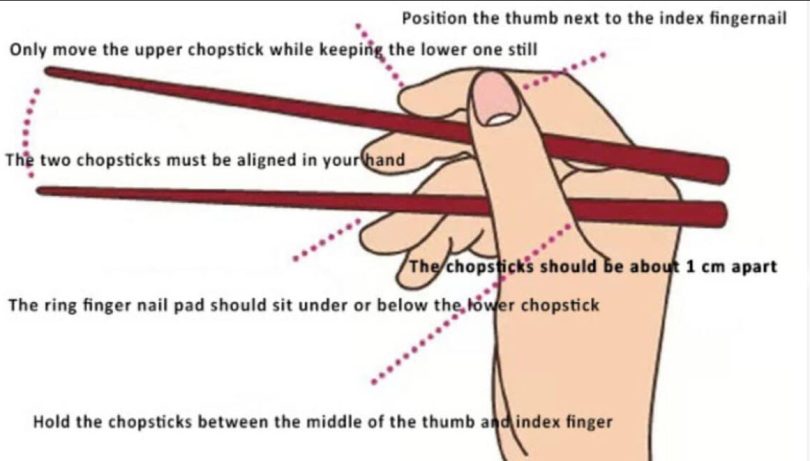How To Use Chopstick While Eating – When Eating With Chopsticks. Chopsticks, the most widely used type of cutlery in the world, have their origins in China and have since expanded to Japan, the Korean Peninsula, Vietnam, and other Asian nations.
How To Use Chopstick While Eating
Chopsticks have been made of almost every material known to man from bamboo, bone, and wood to plastic, porcelain and metal.
Chopsticks are synonymous with Chinese culture, and I don’t think there is anyone who would think of Chinese food without chopsticks emerging in their mind.
RELATED: How To Navigate to the closest Grocery store
So, today I’m going to go through the different kinds of chopsticks and their pros and cons, and how to use them correctly.
The Different Kinds Of Chopsticks
Traditional Wooden Chopsticks
Traditional chopsticks are usually brightly decorated, but it is now known that painted eating utensils are not good for us, and can even be poisonous.

The paint often contains lead and organic solvents such as benzene and other carcinogenic substances, which are harmful to the human body.
RELATED: Jinsi Ya Kupika Ugali | How to Cook Ugali
For this reason, they should not be used. Some families like to give children bright colored painted chopsticks to use, but don’t be tempted.
Plastic Chopsticks
Ordinary plastic chopsticks are brittle and break easily.

When heated, they can also melt and deform, allowing dangerous compounds to enter the body.
Bone Chopsticks

Chopsticks made of bone have an excellent texture, but they are more expensive and readily discolor.
Metal Chopsticks
Chopsticks made of silver, stainless steel, and other metals are too heavy to balance in your hands and could burn your mouth if they overheat.

Additionally, they must be made of food-grade stainless steel because using dinnerware made of lesser stainless steel or using it incorrectly might be harmful to your health.
Chopsticks made of titanium are a good substitute. Titanium has no hazardous or adverse effects on the human body. Also, they are simple to clean.
Bamboo Chopsticks
Bamboo chopsticks are the first choice. Bamboo is non-toxic and harmless, environmentally friendly, and comes in a variety of colors.

However, due to its porous nature, bamboo is not easy to clean and absorbs water, making a good environment for microbes to multiply.
Regular disinfecting is needed to avoid mold forming. The other downside to bamboo chopsticks is their tendency to split and form ‘long hairs’ so they should be replaced regularly.
Ceramic Chopsticks
Ceramic chopsticks are not only easy to use and practical but also healthy and environmentally friendly.

Ceramic chopsticks are safer, healthier and more durable making them a good choice.
How To Use Chopsticks Correctly
Contrary to popular assumption in the West, using chopsticks is not challenging. Chopstick proficiency will be explained today!

There are seven essentials to mastering the use of chopsticks:
1. The two chopsticks must be aligned in your hand.
2. Only move the upper chopstick while keeping the lower one still.
3. Hold the chopsticks using only three fingers: your thumb, index finger and middle finger.
4. Position the thumb next to the index fingernail.
5. The ring finger nail pad should sit under or below the lower chopstick.
6. Hold the chopsticks between the middle of the thumb and index finger.
7. The chopsticks should be about 1 cm apart.
The Seven Most Common Errors Made When Holding Chopsticks
No. 1: The most common error is holding the chopsticks with the thumb and index finger placed on top of the chopsticks with the middle finger and ring finger hanging below and the little finger next to the ring finger.

No. 2: All five fingers are separated with the chopsticks propped on the center of the ring finger, causing the chopsticks to cross over.

No. 3: The little finger is suspended, the chopsticks are held and balanced by the thumb, and the English hold their teacups in this manner.
The index finger and ring finger are each placed each of the chopsticks not allowing free movement.

No. 4: Fist-style, that is, holding both chopsticks enclosed by all fingers formed into a fist.

No. 5: The Pen Grip with the thumb and index finger above the chopsticks, like holding a pen, again, causing the chopsticks to cross over.

No. 6: The index finger is tilted with the chopsticks placed in the middle of the thumb and index finger.

No. 7: The fingers close together like a claw with the thumb and middle finger holding the chopsticks.
Chopsticks Etiquette
1. After the food is picked up, the dish should not be put back but held for the time you are eating from it.
2. Do not use chopsticks while facing people or use them to point to anyone.
3. Do not place your chopsticks upright in a bowl of rice.
4. Do not try to pick up food another person is intending to pick up.
5. At a banquet, you should not start before the master moves his chopsticks.
6. In some countries, diners will wait until guests (or the oldest person) begin to eat before proceeding.
7. During the meal, if you are undecided about what to pick up with your chopsticks, do not wave them around ‘looking’ for something. Decide on what you want and then pick it up with your chopsticks.
8. Do not wave your chopsticks around when talking. Each time you finish using the chopsticks place them down gently and quietly.
9. Do not lick the chopsticks or put them in your mouth without food on them, or use them to push the bowl, plate or cup.
Now that you know all about chopsticks and how to use them, it’s time to have a go! In my guide What Are The Best Chopsticks I will let you know a few more things that will help you buy the best pair of chopsticks for you, so you can start practicing.






